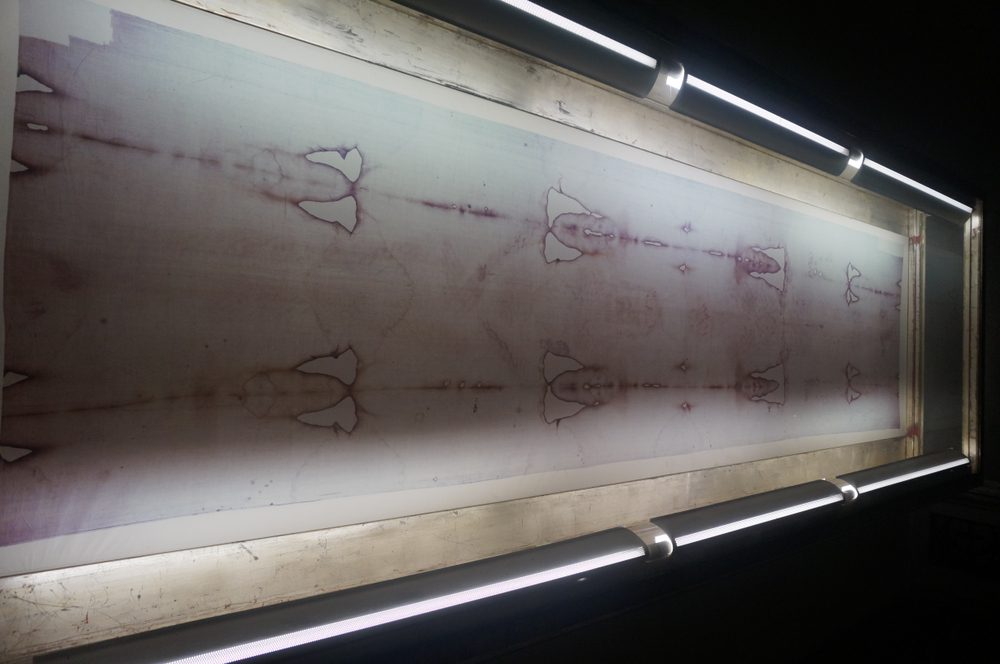No products in the cart.

The study, soberly entitled “X-ray dating of a linen sample from the Shroud of Turin,” went relatively unnoticed when it was published on April 11th, 2022. However, its conclusions deserved accolades from the scientific community and beyond.
A new analysis by Italian scientists of the Shroud of Turin using X-ray technology proves that the famous cloth dates back 2,000 years, contrary to the medieval origin suggested by the disputed 1988 carbon-14 analysis.
Until now, the carbon-14 dating carried out in 1988 dictated public opinion. At the time, many precautions had been taken to give the carbon experiment authority. Three independent laboratories, located in Zurich, (Switzerland), Oxford (UK), and Tucson (Arizona), had analysed fragments of the Shroud and had all come to the conclusion that the Shroud was a medieval forgery.
However, within that same year, many voices were raised that objected to the method used in the testing, with a battery of different arguments. Carbon-14 dating, which is based on the radiological measurement of the carbon-14 naturally contained in organic matter, can be used to estimate the age of certain, very old artefacts or natural materials. It is commonly used in palaeontology or archaeology, but its relevance increases with the age of the object of study—ideally between 6,000 and 50,000 years. The technique was therefore not suitable for an object as recent—even assuming it was 2,000 years old—as the Shroud, and could only give an uncertain result, with a potential margin of error of several hundred years. Moreover, carbon-14 dating would not be able to rule out the many more recent foreign bodies that may have crept into the interstices of the cloth, and risk distorting the result. Another explanation was advanced saying the experiment was done on a latter fragment issued from a reparation of the original shroud.
The X-ray dating technique used by the Italian scholars is a completely different and much more precise process. It involves analysing the Shroud at the level of atoms. The researcher will measure the natural ageing of the linen cellulose using X-rays, and then convert it into the time elapsed since manufacture. The results obtained from the Shroud were compared with those of other authenticated linen fabric samples, ranging in age from 3000 BC to 2000 AD. The measurements of the shroud were found to be particularly close to those of a linen fabric that historical records date back to the siege of Masada in Israel, between 55 and 74 AD. These results are therefore far from the medieval hypothesis put forward in 1988.
The X-ray technique offers a number of additional guarantees of reliability, explains Liberato De Caro, member of the research team, in an interview with the National Catholic Register. First, the sample required for the analysis is much smaller than that used for carbon-14 dating: 0.5 x 1 mm. The risk of finding exogenous particles is therefore considerably reduced. In addition, X-ray analysis can be carried out several times without damaging the support, whereas carbon-14 dating can only be done once per sample, which prevents any cross-checking in the event of doubt or error in the protocol.
The results obtained and published in April are only a first step. The research team intends to have the experiment repeated by several other independent laboratories, on several samples, to establish a more conclusive body of evidence. In any case, these findings are in addition to other interesting signs already observed that point to the authenticity of the Shroud, such as the presence of old pollens found only around the Dead Sea. But the most important sign for the believer is certainly the presence of a body, printed in negative, on the Shroud, which was revealed in 1898, during the printing of a photograph, a phenomenon that to this day remains completely unexplained by science—but which faith in Christ can account for.